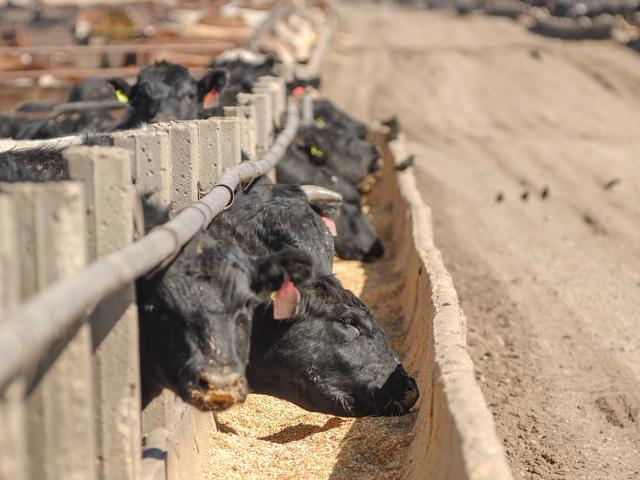
Last week, the cattle complex performed nearly flawlessly as fed cash cattle prices reached all-time highs, feeder cattle prices were higher, and the futures contracts ran to new contract highs.

Last week, the cattle complex performed nearly flawlessly as fed cash cattle prices reached all-time highs, feeder cattle prices were higher, and the futures contracts ran to new contract highs.

Beef demand may be exceptional and could even increase seasonally through the Memorial Day weekend, but it's going to take a lot of market support for traders to remain steadfast and focused amid any more trade chatter that could arise.

Whether it's because of tariff concerns, consumers wanting to tighten their spending budgets, or simply because Easter isn't a major beef dish holiday, pinpointing the exact reason why boxed beef prices were pressured last week requires sorting through a number of different...

During the last two weeks, packers have been able to buy around 141,000 head of cattle and commit them to the nearby delivery, which could mean that cash prices may trade steady to somewhat lower this upcoming week.

Although I believe the cattle market's long-term trajectory is bullish, I'm led to believe this upcoming week could present some challenges.

The price you pay for record-high values is the anxiety and volatility that inevitably goes with them. That is one situation where technical analysis helped immensely.

With boxed beef prices trading higher, the cash cattle market was able to trade $5 to $9 higher last week. Traders are fully supportive of the board, and it seems as though the live cattle complex may be ready to charge into its spring rally.

If beef demand and fed cash cattle prices continue to find consistent support, there's a good chance that the market may have changed its direction last week and could be headed towards a rally in the second quarter.

Finding technology that pays for itself is important on the farm. Having something that helps save the life of livestock or a human definitely has a good return on investment.

As traders, cattlemen and everyone in between head into this week's market, we expect pressure to again be the theme early in the week. Unfortunately, it could remain the market's tone until seasonal boxed beef demand perks up.

Cattle futures have been under stiff pressure the last month, but is there a possibility last Friday's Cattle on Feed report could help turn the market higher?

Seeing the markets plummet well over $10 in a matter of 10 short days makes us wish we had a crystal ball to guide us and offer some peace of mind about the cattle market. Now's the time to set targets and create an action plan.

Without the rallying nature of the cash cattle complex to help traders along, how much upward potential does the futures complex possess for the near term?

News travels fast and people react most of the time in a negative way. Will the cattle complex again find its footing?

Follow along as DTN shows what life is like on a New Mexico family ranch for a year through its upcoming View From the Range series.

Given the continued ban of Mexican cattle imports into the United States, logically the data aligns perfectly with what's happening in the market.

Foreign ownership of U.S. agricultural land increased from 2022 to 2023, led primarily by the expansion of land use for renewable energy by foreign entities. In 2023, 21.9 million acres of reported foreign-held agricultural land was forestland, followed by 13.2 million acres of...

We all know at some point packers will gather enough cattle for the market, causing this incredible rally to cool down. But I'm personally not convinced packers have enough supply purchased just yet.

APHIS confirmed on Friday that live cattle imports from Mexico to the U.S. are still at a standstill due to Mexican veterinary officials finding New World screwworm in a cow in southern Mexico in November 2024.

Last week the fed cash cattle market scored new all-time highs yet again; but with packers still short on inventory and beef demand strong, everyone is wondering: How much higher will the market trade this week?
DIM[2x3] LBL[blogs-harringtons-sort-cull-list] SEL[[data-native-ad-target=articleList]] IDX[2] TMPL[news] T[]
DIM[2x3] LBL[blogs-harringtons-sort-cull-list-2] SEL[[data-native-ad-target=articleList]] IDX[5] TMPL[news] T[]